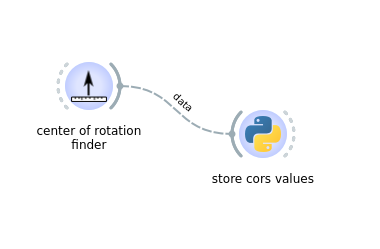Python Scripts#
Users can add their own processing using a Python widget to the workflow, as presented in this video: [Python Widget Example](https://www.youtube.com/watch?v=VGv628AIgn8).
The Python widget defines a series of inputs and outputs. Inputs are variables provided when the widget is triggered. Outputs must be defined in the Python widget to provide inputs to the next widget.
Currently, this widget can have the following inputs:
in_data, in_datas: Correspond to the data object in Tomwer (also known as scan). Warning: if several ‘data’ inputs are provided, then ‘in_data’ will be set to None, and in_datas will collect all the in_data inputs provided.
in_volume, in_volumes: Correspond to the volume object in Tomwer. Handling of in_volumes vs in_volume is the same as in_data and in_datas.
in_future_object, in_future_objects: Correspond to future objects in Tomwer.
in_configuration, in_configurations: Correspond to configuration objects in Tomwer (Python dict expected).
in_cluster_config, in_cluster_configs: Python dictionary corresponding to a cluster configuration.
in_serie, in_series: Correspond to serie objects in Tomwer (series of scan or volume).
Existing outputs are:
out_data
out_volume
out_future_tomo_obj
out_object
out_configuration
out_cluster_config
out_serie
Here are a few examples of such scripts:
Warning
GUI Freeze
The Python script will be executed in the main Qt thread. As a consequence, during its execution, the GUI will not be responsive. If your processing is heavy, you might experience some GUI freezing.
If the Python script is triggered before the processing finishes, Orange will fail to process anything. As a result, the GUI may freeze indefinitely. For advanced processing, one workaround could be to add a timer widget before.

